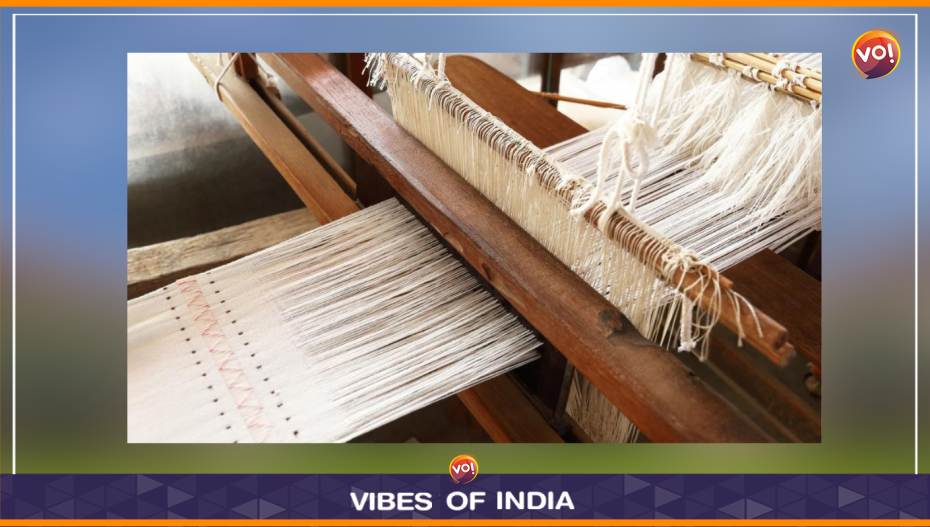The Crafts Council of Gujarat (CCG) has transported a ten feet high handloom to the tenth-floor ballroom of the ITC Narmada, where it has been placed right next to the stage. This is the newly formed Council’s first big event and it’s making a splash. The Who’s Who of Ahmedabad is in attendance, all dressed in ethnic chic. The theme is “Know Your Weaves” and some of the State’s finest weavers have been invited to display their work, including Imtiaz Ansari, who has been specially brought in from the town of Mansa to work the big loom. He does so diligently through the event, quite indifferent to the proceedings on stage, which include a panel discussion on the relevance of traditional crafts in today’s age. The intellectuals on stage are oblivious of Imtiazbhai, so the feeling seems mutual.
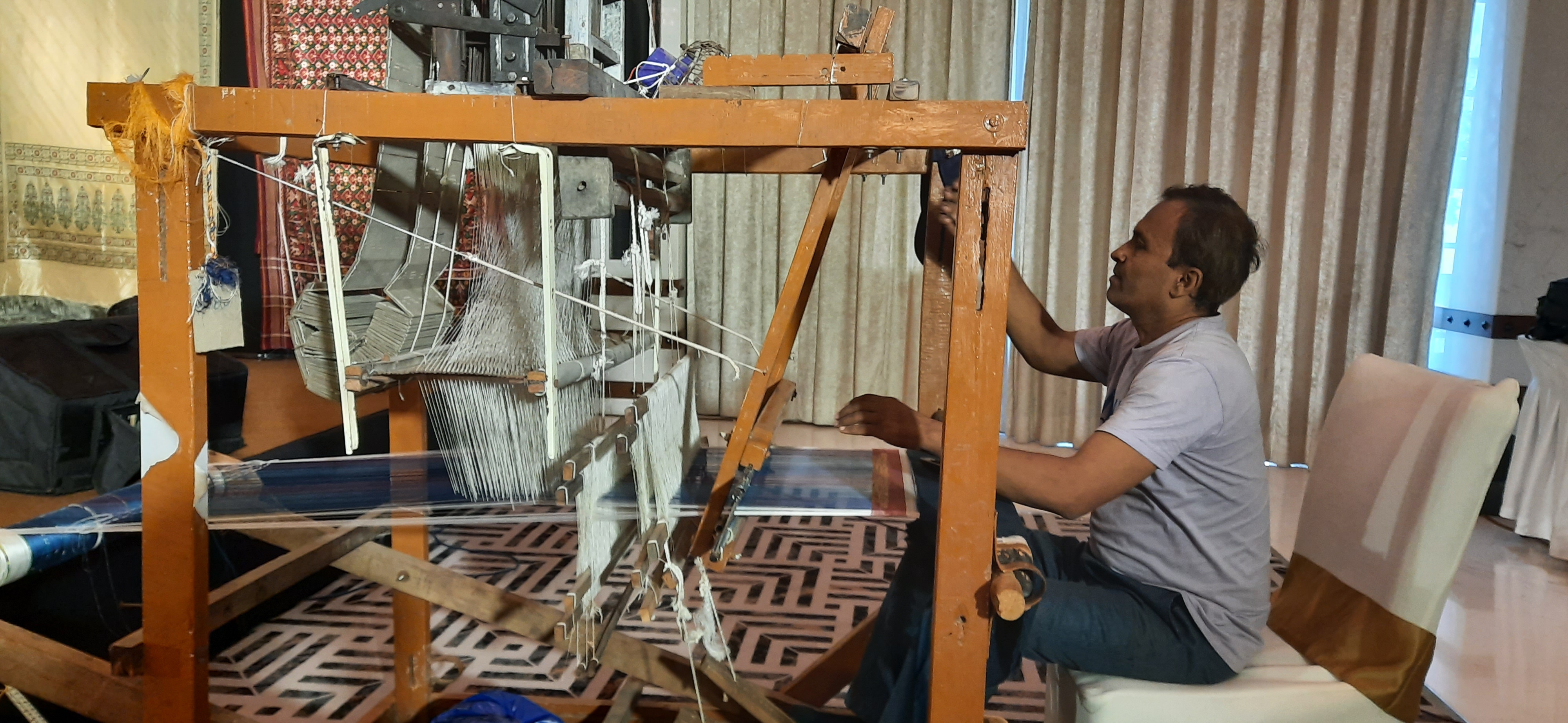
There’s always going to be a disconnect between those who make expensive products and those who buy them. By bringing them together on National Handloom Day, the CCG event just (inadvertently) put it on display.
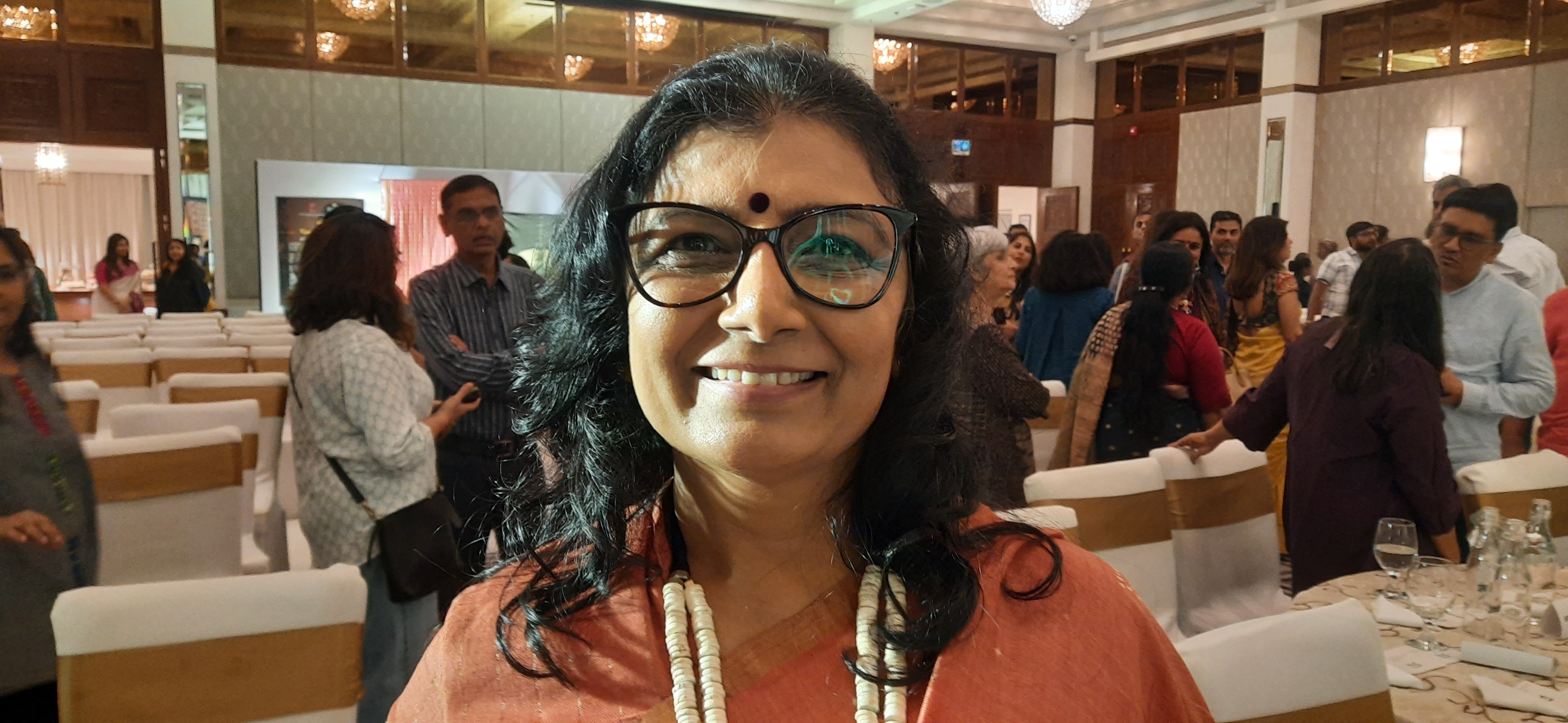
After introducing her fellow council members to the audience, CCG chairperson Shilpa Patel talks about their mission. “We must keep creativity and innovation alive. We need to leverage technology to reach wider markets. We must educate the crafts community on the various government schemes they can avail of to improve their prospects,” she says.
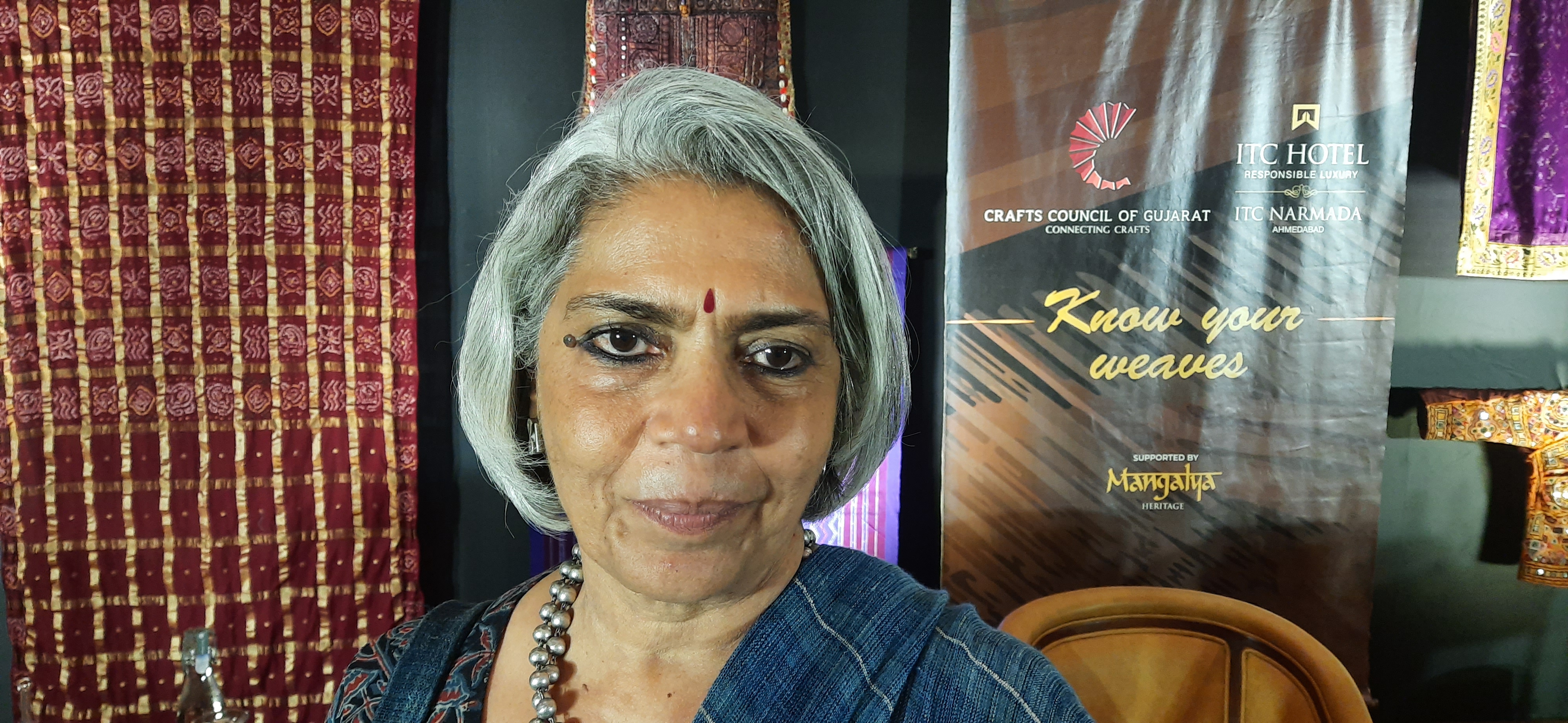
Chief Guest Archana Shah of Bandhej, a pioneer in bringing traditional craft work to the city markets, says we are lucky our hand skills have not died out, like they have in so many other parts of the world: “Our handicraft industry employs 30 million people, which places it second only to agriculture. By supporting it, we take care of unemployment and climate change, two major problems of our times.”
The hour-long panel discussion that follows deals with many weighty issues. Moderator Falguni Patel asks: are new gen youngsters from the artisan communities interested in carrying on the craft tradition? Archana Shah says that after a college education, many prefer to opt out of handicraft work. It is also true that more women are now working on the handloom to earn income. Design consultant Jaai Kakani of Soach India says a new breed of youngsters from the agriculture sector are taking the place of traditional craftsmen. “From agriculture to craft is a big jump in lifestyle, so there is an incentive for them to learn,” she says.
Anchal Jain co-chair, of IIMA’s creative and cultural businesses programme, says that the work the craftsmen produce should fit into contemporary lifestyles. “We should not feel morally obliged to buy handloom craft. It should come from a genuine desire,” he says.
Hotelier Abhay Mangaldas, whose House of Mangaldas uses much craftwork in its interiors, says Gujarat’s handloom sector is languishing and needs a major fillip to grow. “Interest in heritage and craft is not growing. The inflexion point can only happen through government policy or collaboration with industrial houses like Arvind, which is promoting khadi denim,” he says.

Keenan McKinzie, General Manager of the ITC Narmada, is more upbeat. “Our guests show considerable interest in Ahmedabad’s heritage, so our staff has been trained to respond to any questions they may have, including where to shop,” he says. The ITC Narmada, which is celebrating its first anniversary this week, was an equal partner with the Craft Council of Gujarat in organising this prestigious event.
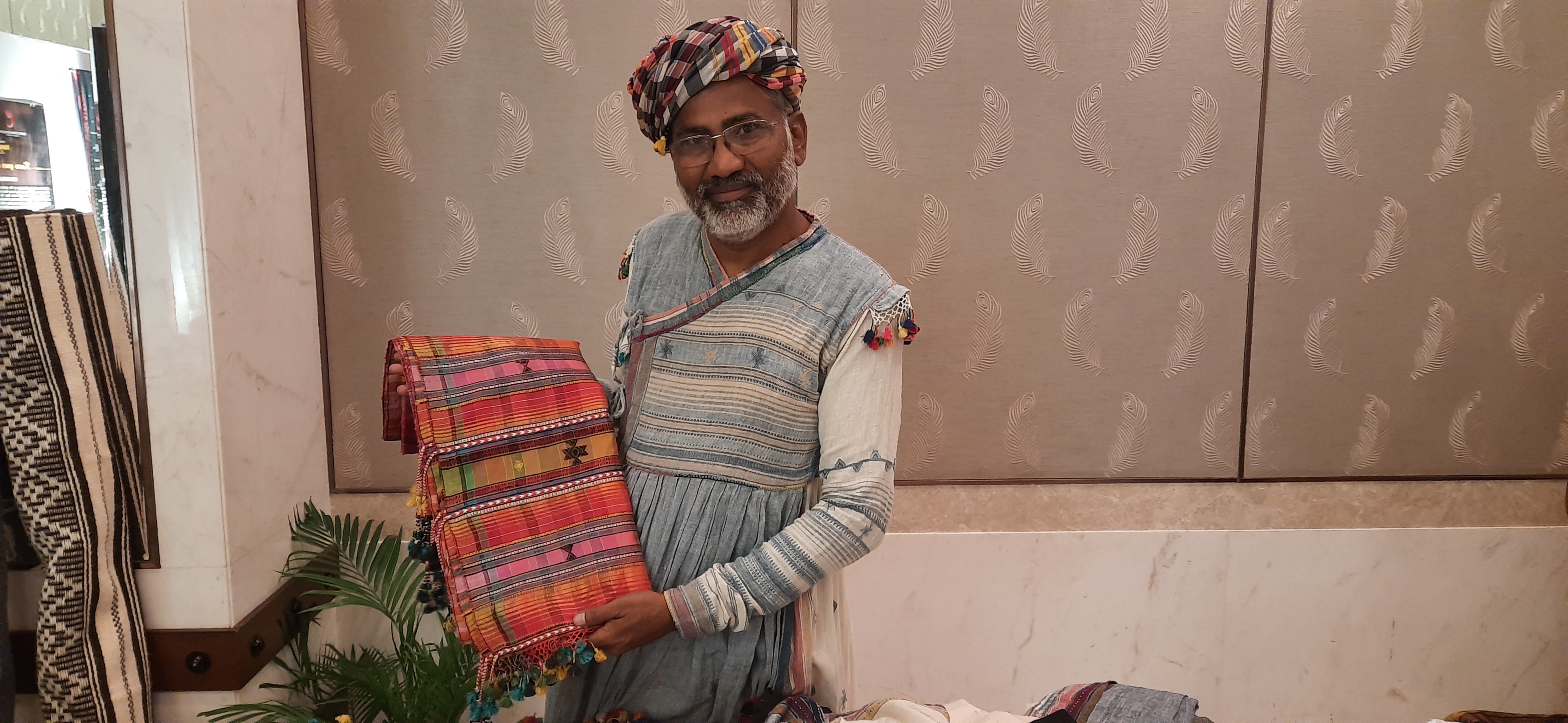
Also Read: Achyutbhai: A Public Intellectual And My Guru (1946-2023)



